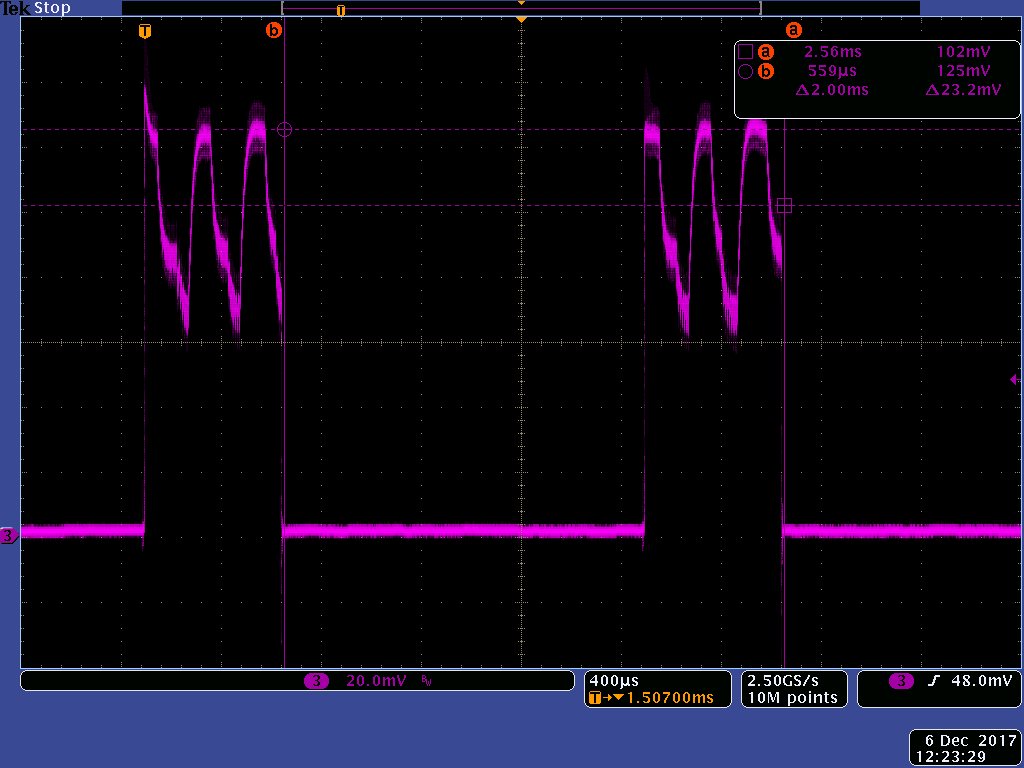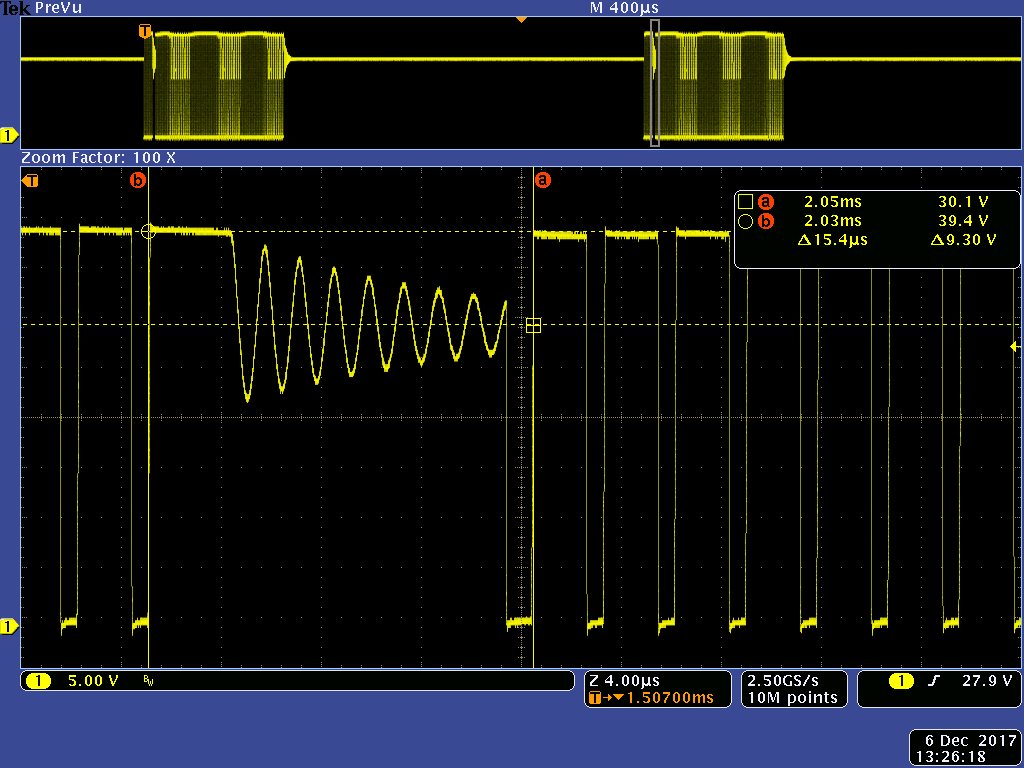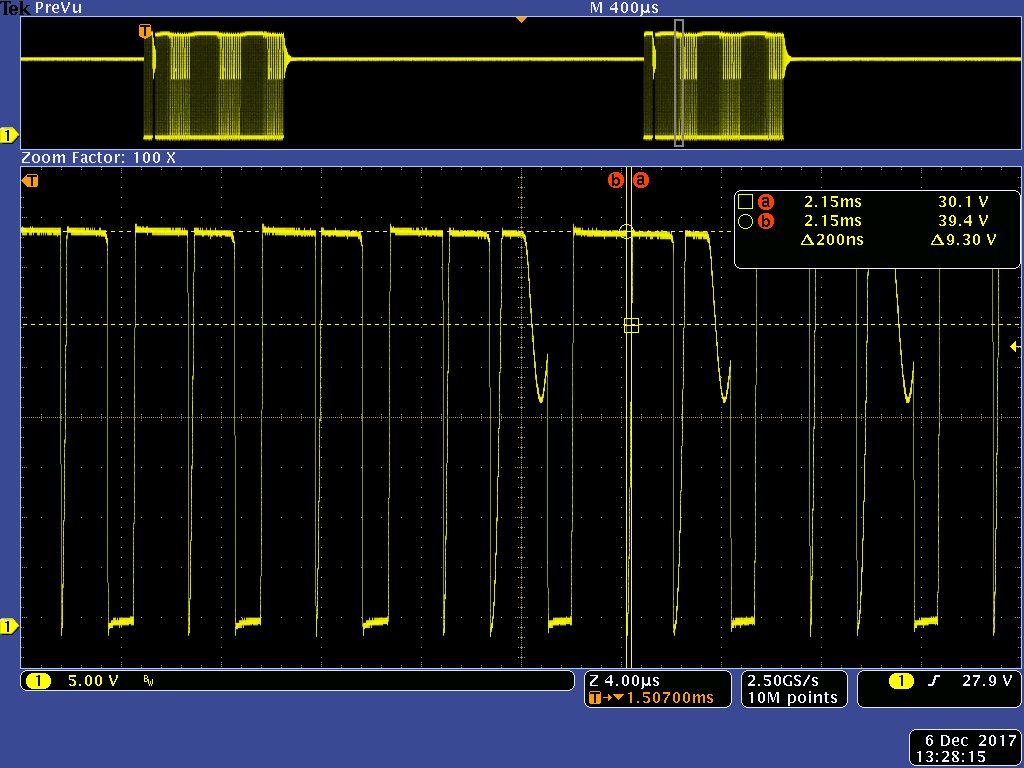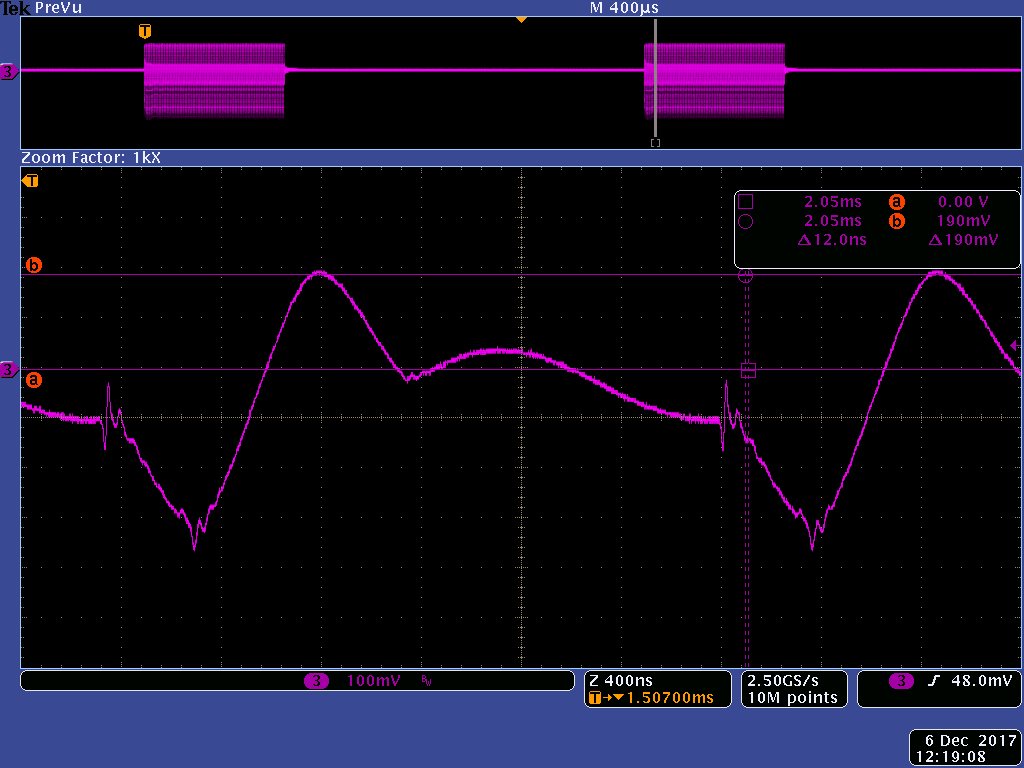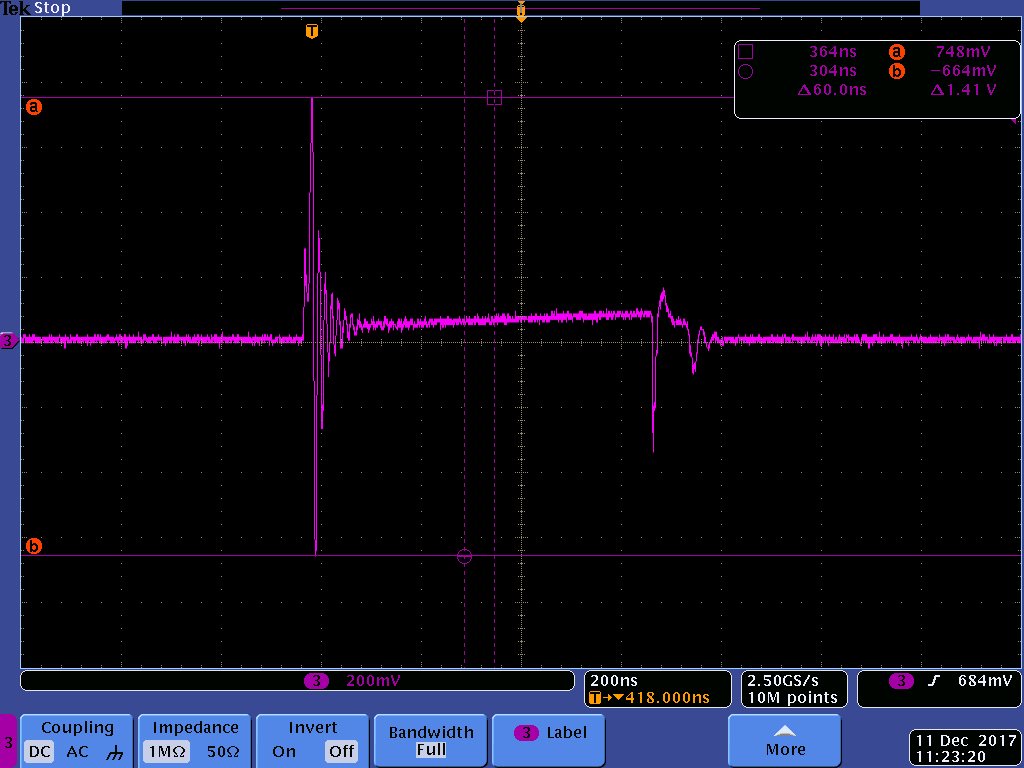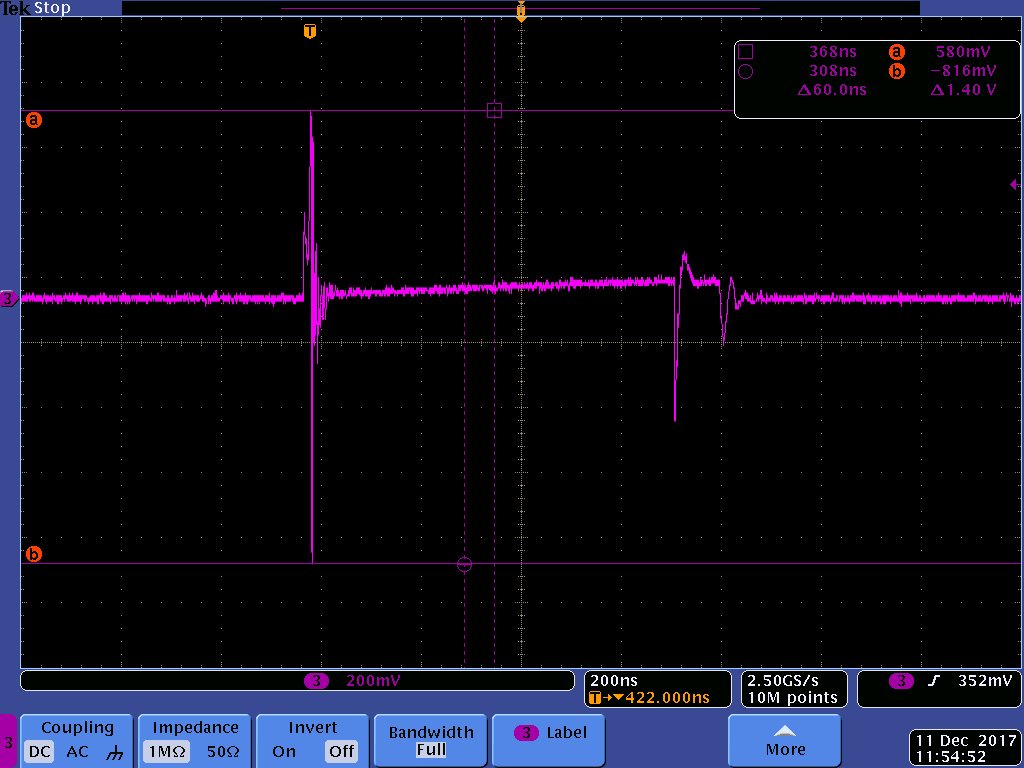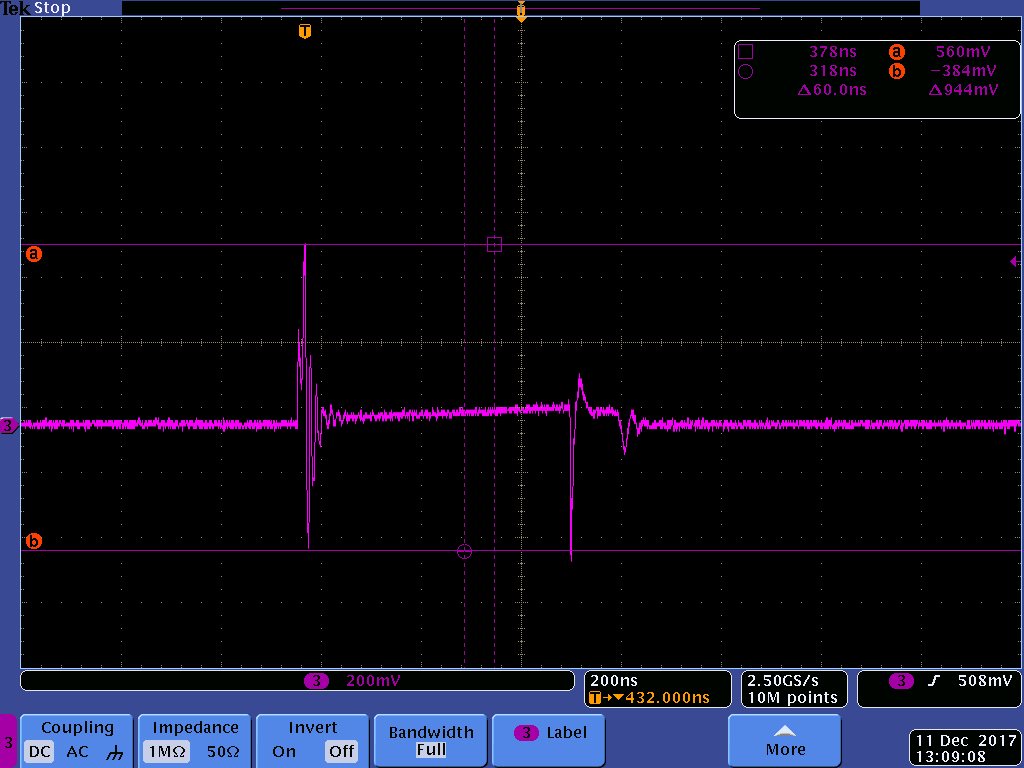Dear all,
I am using the LM3423 buck-boost evaluation board for testing a design. Ouput current goes unstable as Vin approaches the upper part of the range.
Vin: 7 V to 31 V
Vout: 10.5 V
Iout: 0.25 A
PWM is to be used for dimming
At input voltages at around 24 V and below, everything works fine. Some overshoot at the start of each pulse, but we should be fine with that.
Se picture below. Voltage is measured over Rsns. 100 mV corresponds to the desired 0.25 A.
When input voltage goes above around 26 V, output current goes unstable. There is also audible noise from the inductor.
See picture below (Vin = 30 V):
Next 2 pictures are from switching node, where it is obvious that pulses are skipped or differs much from estimated duty-cycle. Vin = 30 V. (When Vin = 24 V, all pulses have expected pulse width)
Perhaps it has something to do with that discontinuos mode is entered, so I measured the voltage over a 0.1 ohm resistor in series with the inductor, to see inductor current.
See picture below, I am not really sure what I see here, but seems current crosses 0 and discontinuous mode is entered but this is already at 24 V where things are OK. Unfortunately I do not have a current or differential probe... :
Another thing is that I have been thinking of is if the Rlim sensing triggers on overcurrent. Below picture is from measuring over Rlim. There is a spike that goes above trigger voltage of 245 mV, but shouldn't this be ignored because of blanking circuit ?
I have tried changing these values and only see small changes in behavior:
- L = 47 uH, 33 uH, 68 uH 100 uH
- Ccomp = 100 nF 220nF, 470 nF, 1 uF, 2 uF.
- Chspn = 47nF, 100 nF 220 nF
Other observations:
- FLT is never triggered
- OVP is never triggered
- LRDY is triggered in those cases ILED swings above/below threshold
The design is from webbench and I checked it against design guidelines, making all calculations, and they align. See attached schematic.
The design is run on the LM3423 buck-boost eval board where I kept the FETs, diode and inductor from the original board. Otherwise board is update according to webbench design.
Do you have any ideas on how to get clean output current also as Vin approaches 30 V?
Please help me out this is frustrating...



